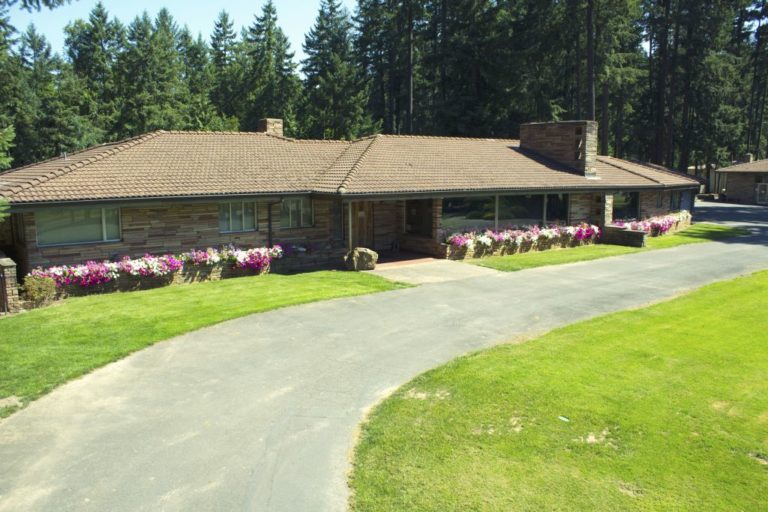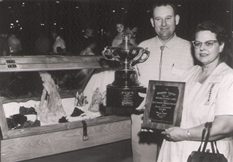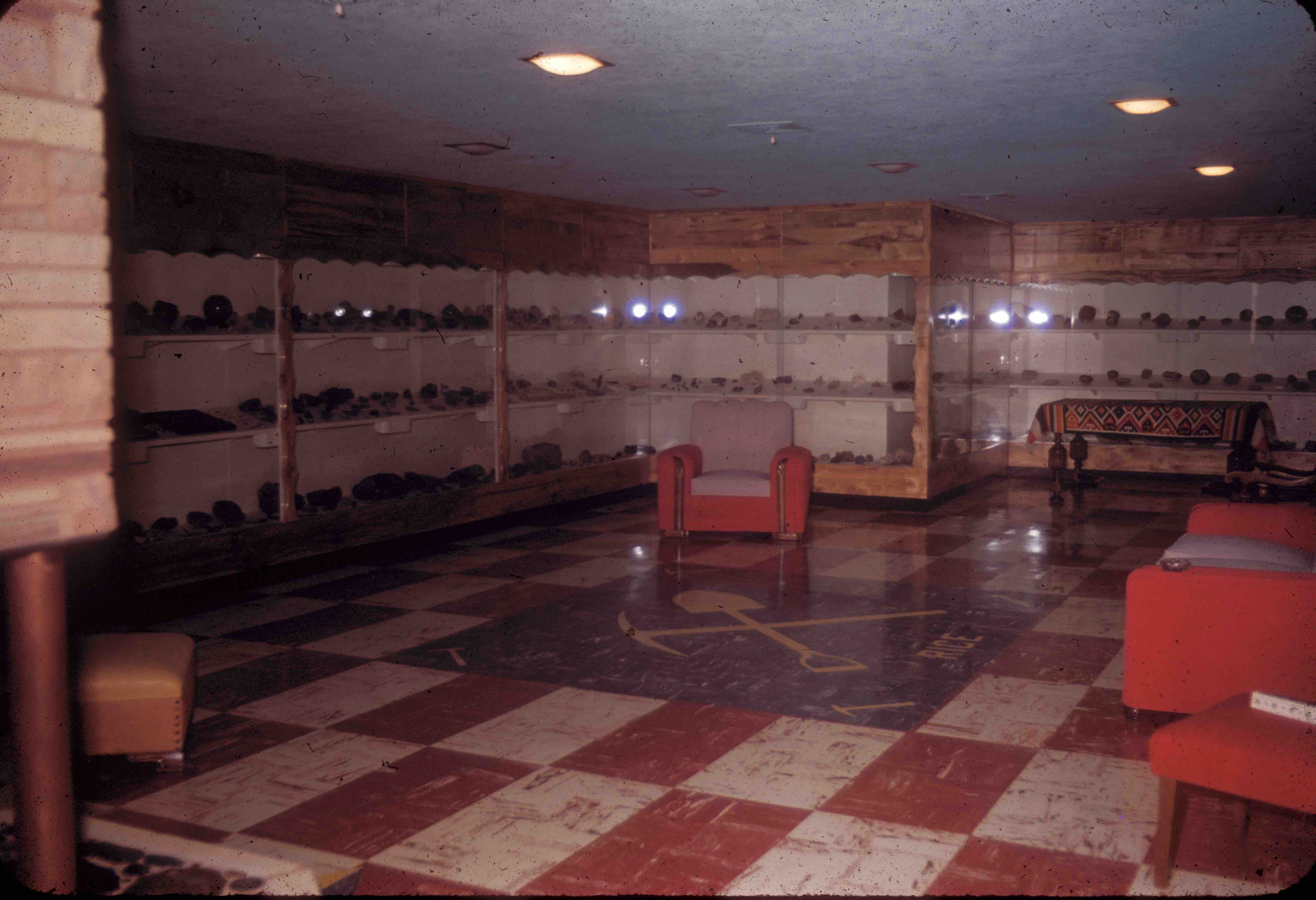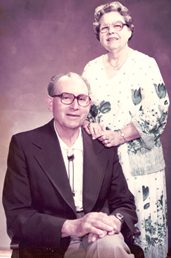OUR FOUNDERS
The Rice Northwest Museum of Rocks and Minerals was founded by Richard and Helen Rice. The following is a historical summary of the creation and development of the museum.


1938
Richard and Helen Rice began their love affair with rocks as the result of a weekend family outing to the Oregon Coast. While on this trip they picked up a handful of agates and jaspers they simply thought were pretty. A local rock shop polished the stones and revealed their beauty. After seeing the transformation of these seemingly ordinary pebbles into beautiful stones, their lifetime romance with rocks and rock collecting began.
Soon after their beach agate collecting experience, the Rices joined a new club in Portland, the Oregon Agate and Mineral Society (OAMS). Through OAMS they learned about and took part in field trips where they could find thundereggs, petrified wood, carnelian, moss agate and other beautiful rocks of the Northwest. They enjoyed this so much that they took an active role in the leadership of OAMS.
Around this time they also became active in the Northwest Federation of Mineralogical Societies’ gem and mineral shows and other activities, leading to involvement in the American Federation of Mineralogical Societies (AFMS). Helen Rice served as President of the American Federation in 1959-1960. During her term as President, Helen also served on the AFMS committee that wrote the first set of “Uniform Rules” for competitive exhibits at the Federation shows. She was also instrumental in the AFMS obtaining IRS 501(c)3 status as a non-profit educational organization.



1952
Richard and Helen Rice began construction of their “dream house” designed around their rockhound hobby. The key feature of this house was a full gallery of lighted, built-in showcases in the basement.Their love of nature and earth science is obvious in the Rice’s use of natural materials for the construction of their home. They visited the flagstone quarries in northern Arizona and watch workers cut and load boxcars with the stone that would ultimately be used in their home construction.
Richard, a logger by profession, discovered a couple of downed myrtlewood trees while working in Coos County on the southern Oregon coast. Richard purchased the trees and personally logged them for use in the woodwork in the home. Near Vernonia, Oregon, he logged the maple tree that produced the beautiful quilted maple pattern used for the pantry area and kitchen cabinets. He chose cedar for the underside of the exterior eves. Richard worked with a friend to build a portable sawmill to cut the logs for lumber for the house. He negotiated with a working mill on the Willamette River to kiln-dry the lumber. In exchange, he agreed to sell a raft of Douglas Fir logs he had been storing on the river.
The beautiful tile used in the dining room fireplace and the basement kitchen area was purchased in Mexico during a winter agate and mineral collecting trip.
The use of these materials at that time and the design of the house was very unique and was a major factor that placed the residence on the National Registry of Historic Places.


1950-60s
The Rices, along with Don and Lee Kendall, George and LaVerne Williams, and many other rockhounds in Washington County, Oregon, decided it would be a good idea to have a club in Forest Grove, closer to local residents. The Tualatin Valley Gem Club (TVGC) was established in 1957. Richard and Helen spent the rest of their lives as active members of TVGC. They were eventually rewarded by TVGC and also the Oregon Agate and Mineral Club (OAMS) with lifetime memberships. They remained active in both clubs throughout their lifetimes. Both clubs played an important part in the development of the museum, supplying volunteers and more.
TVGC especially played a huge part in the development of the Rice Museum. For many years free classes were held in the basement of this museum building to study micro-minerals. Club members also attended free classes here to learn how to make jewelry that showed off their fine lapidary specimens. Helen and Richard hosted many club board meetings in their home, as well as sponsoring work parties to assemble newsletters and to build Federation-standard show cases for use in the gem shows. During this time, the Rices expanded their collection from lapidary specimens only, to include crystallized mineral specimens.

